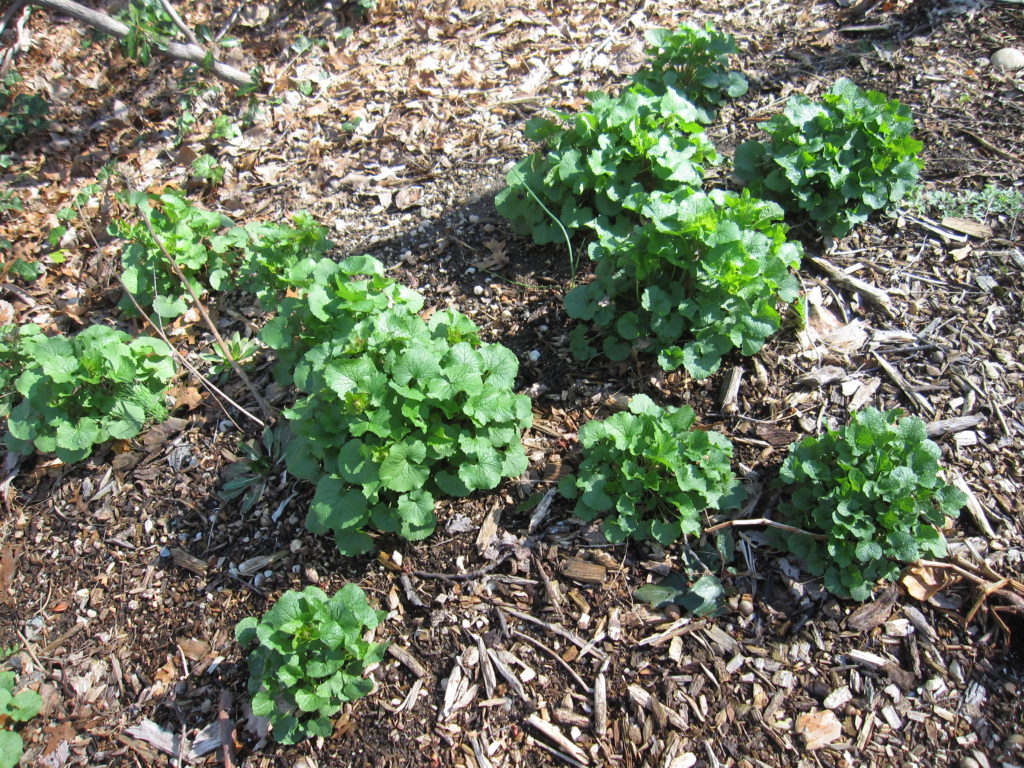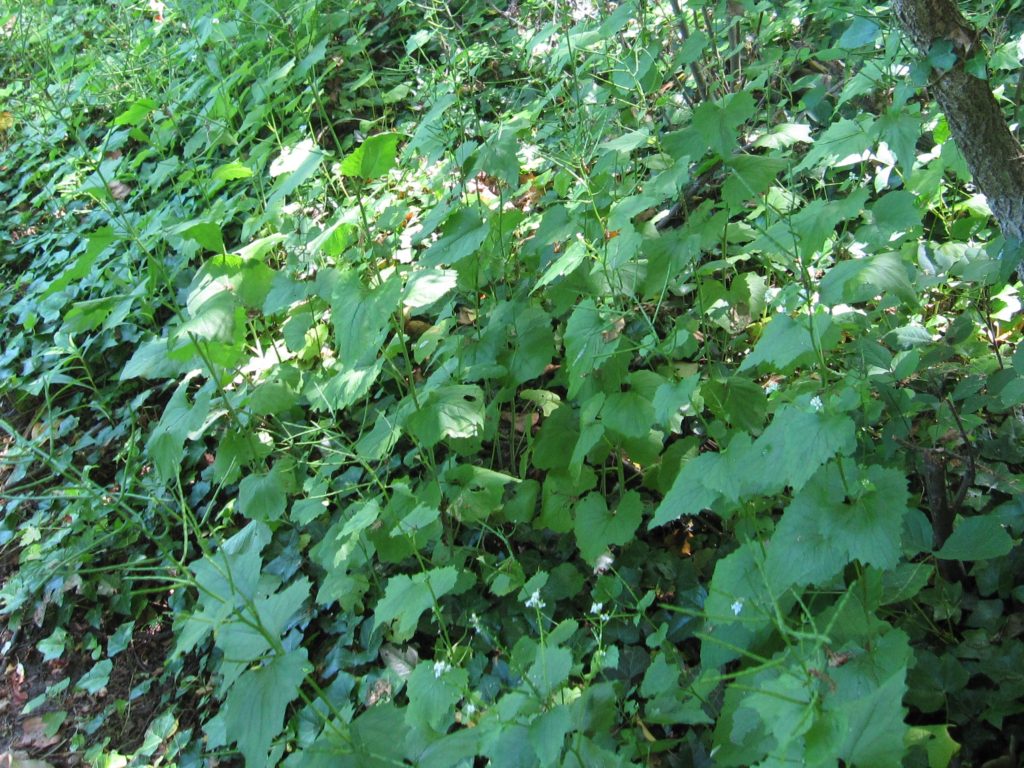Hover over images for detail:

Garlic mustard is a biennial herbaceous plant. In the first year of its cycle, when it grows from seed, this plant will start from two small leaves and grow throughout the summer without forming flowers or seeds. This is the best time to pull out the entire plant before its roots become well-established. Be careful not to confuse garlic mustard with our native common violet, which is part of the local ecosystem.

The young seedlings and small rosettes of the first year’s growth remain close to the ground throughout the growing season and don’t flower. Uproot or drag out with a window squeegee, then bag and dispose.

By April of its second year, the plant quickly matures from the prior year’s roots to produce spiky clusters of white flowers at the top of the stalks by May. The plant continues growing, ending its life cycle with upright seedpods just below the flowers. This transformation from flower to seed will continue even if the entire plant is uprooted. So never leave flowering stalks or seed pods on the ground. They are that tenacious.

Although the roots of garlic mustard will die in the ground by June (the end of its second growing season), to prevent the seedpods from dispersing: In May through June when the ground is moist, wear leather or nitrile-dipped gloves for traction, grip the stem at the ground with a quick back-and-forth motion (visualize pulling the root at a 45-degree angle), bag the plants in clear bags and allow them to cook for several weeks in full sun before disposal. Do not compost.

For additional information about uprooting plants, visit Uprooting Herb Plants.
